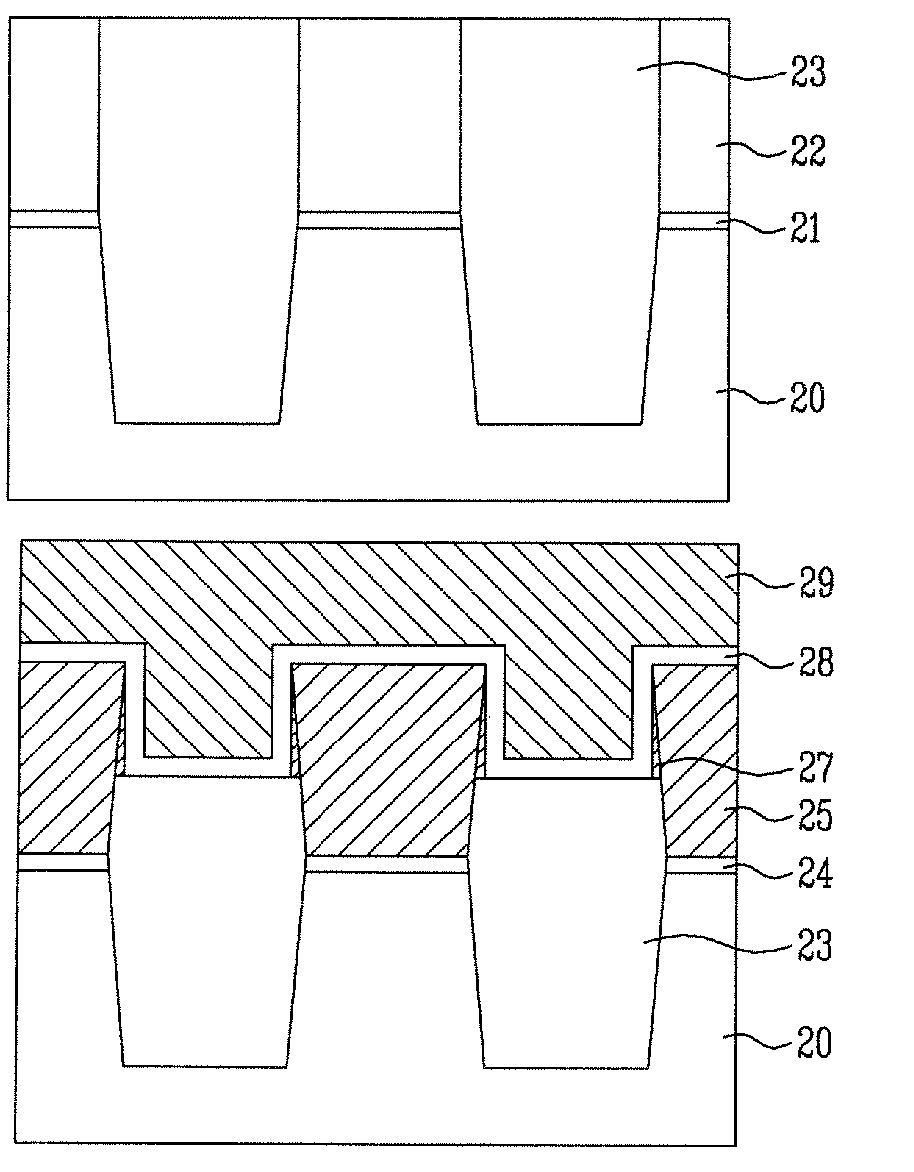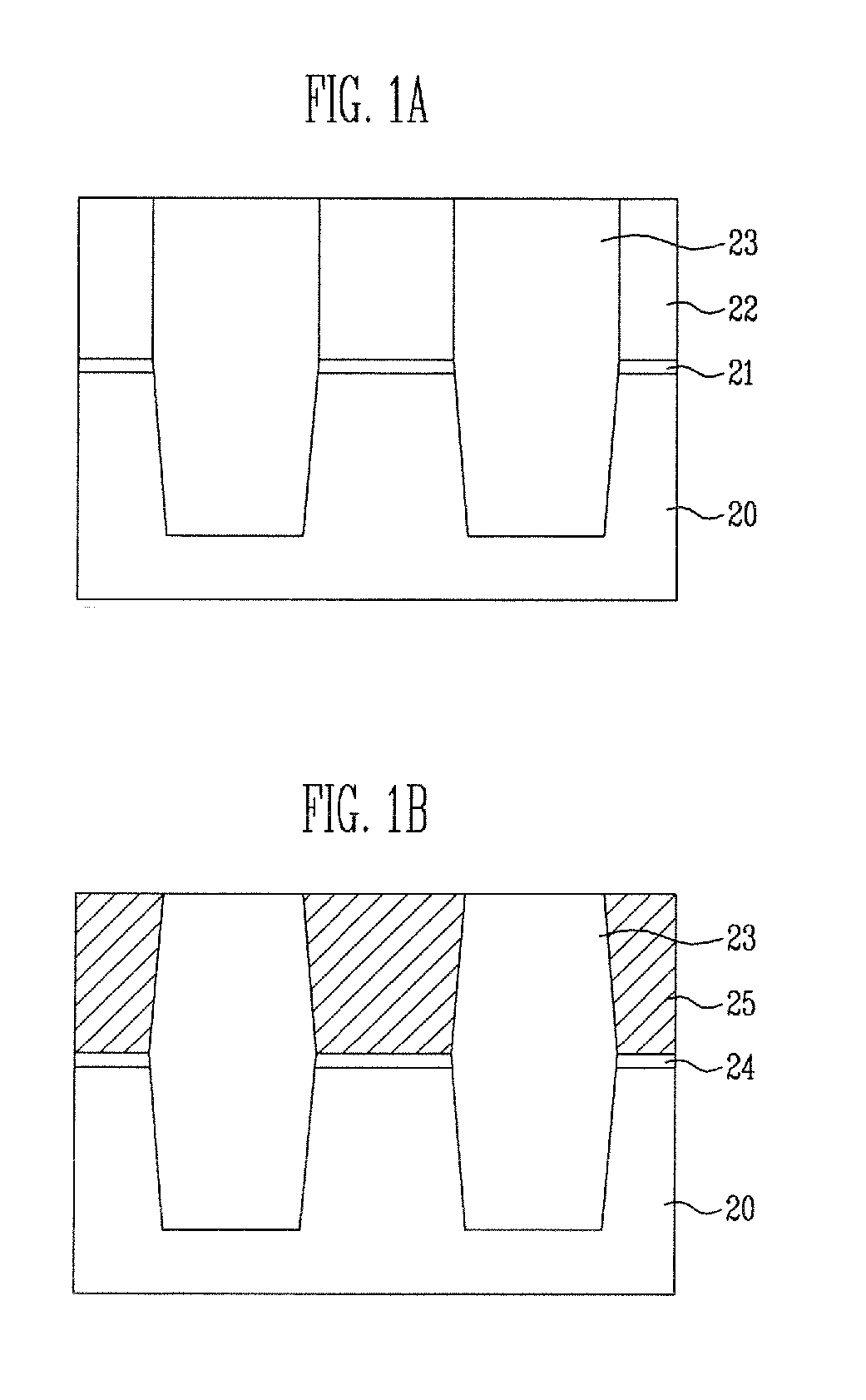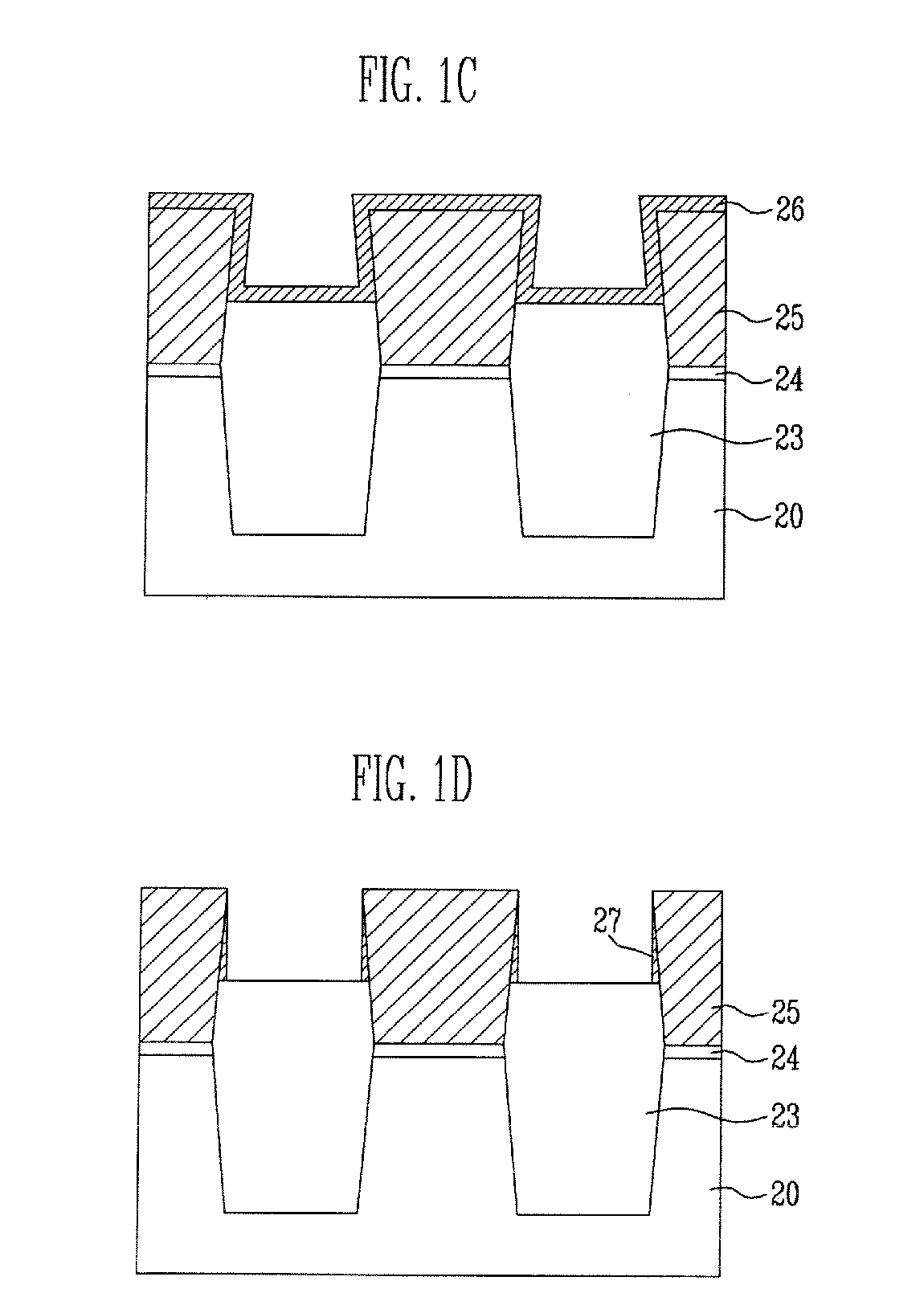Method of fabricating flash memory device
a flash memory and memory device technology, applied in the direction of semiconductor devices, basic electric elements, electrical appliances, etc., can solve the problems of data loss, data loss in the dram, and inability to maintain data when not being powered,
- Summary
- Abstract
- Description
- Claims
- Application Information
AI Technical Summary
Benefits of technology
Problems solved by technology
Method used
Image
Examples
Embodiment Construction
[0040] Various embodiments will be described with reference to the accompanying drawings. Those of ordinary skill in the art will appreciate that the disclosed embodiments may be modified in various manners and the scope of the present patent is not limited by the embodiments described later.
[0041]FIGS. 1a to 1e are cross-sectional view illustrating process steps in an exemplary method of fabricating a flash memory device.
[0042] In the method of fabricating the flash memory device according to the disclosed embodiment of the present patent, a pad insulating film 21 and a hard mask film 22 are first sequentially formed on a semiconductor substrate 20, as shown in FIG. 1a.
[0043] The pad insulating film 21 can be formed to a thickness of 20 to 200 {acute over (Å)} using an oxide film, and the hard mask film 22 can be formed to a thickness of 300 to 3000 {acute over (Å)} using a silicon nitride film.
[0044] The hard mask film 22 and the pad insulating film 21 are selectively removed ...
PUM
 Login to View More
Login to View More Abstract
Description
Claims
Application Information
 Login to View More
Login to View More - R&D
- Intellectual Property
- Life Sciences
- Materials
- Tech Scout
- Unparalleled Data Quality
- Higher Quality Content
- 60% Fewer Hallucinations
Browse by: Latest US Patents, China's latest patents, Technical Efficacy Thesaurus, Application Domain, Technology Topic, Popular Technical Reports.
© 2025 PatSnap. All rights reserved.Legal|Privacy policy|Modern Slavery Act Transparency Statement|Sitemap|About US| Contact US: help@patsnap.com



